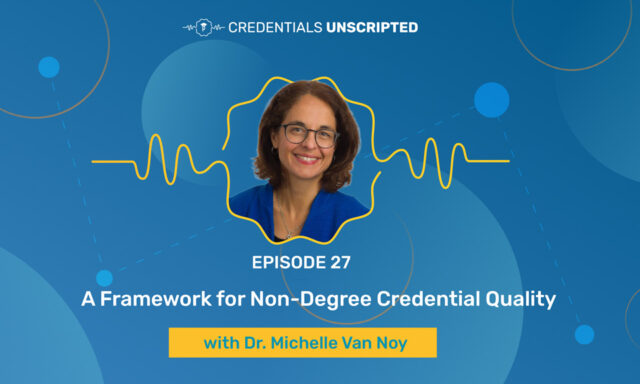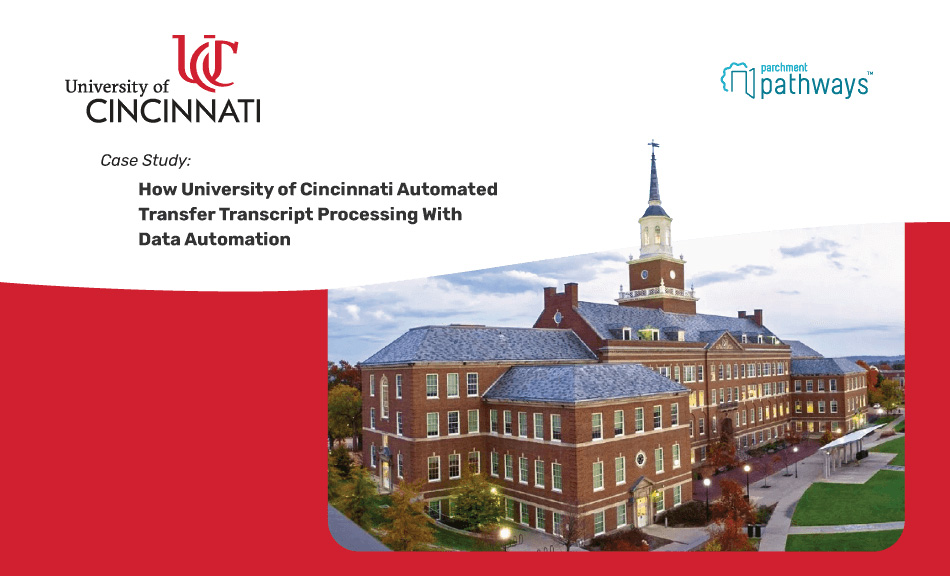
Higher Ed
A Framework for Non-Degree Credential Quality
We use cookies to help you navigate efficiently and perform certain functions. You will find detailed information about all cookies under each consent category below.
The cookies that are categorized as "Necessary" are stored on your browser as they are essential for enabling the basic functionalities of the site. ...
Necessary cookies are required to enable the basic features of this site, such as providing secure log-in or adjusting your consent preferences. These cookies do not store any personally identifiable data.
Functional cookies help perform certain functionalities like sharing the content of the website on social media platforms, collecting feedback, and other third-party features.
Analytical cookies are used to understand how visitors interact with the website. These cookies help provide information on metrics such as the number of visitors, bounce rate, traffic source, etc.
Performance cookies are used to understand and analyze the key performance indexes of the website which helps in delivering a better user experience for the visitors.
Advertisement cookies are used to provide visitors with customized advertisements based on the pages you visited previously and to analyze the effectiveness of the ad campaigns.
Other cookies are those that are being identified and have not been classified into any category as yet.

Recently, we sat down with Molly McDermott-Fallon, Assistant Vice Provost & University Registrar at the University of Cincinnati, to discuss their implementation of Parchment’s Data Automation solution.


Before implementing Data Automation, University of Cincinnati struggled with long processing times for transcript processing and transfer evaluation, causing frustration among their advisors and prospective students. Below, Molly McDermott-Fallon, Assistant Vice Provost & University Registrar, describes how Data Automation alleviated their challenges with transfer credit evaluation and transcript processing.
We were behind in processing transcripts for transfer evaluation and our situation was quickly becoming unsustainable. We had a perfect storm when it came to transcript processing. The credit evaluation team moved under the Office of the Registrar last year. The Ohio Articulation and Transfer Clearinghouse (ATC) was retiring so we weren’t getting XML transcripts anymore, making the process for those transcripts manual. Before implementing a solution, we had a 60-day backlog and each transcript took us 45-60 minutes to process. We knew we needed a sustainable solution if we were going to serve our prospective students well.
We looked at other vendors and even tried to implement with another vendor. The lift and the labor was significant and not worth the return on investment, quite frankly. When we looked at Parchment’s Data Automation, we saw the ease of integrating with our existing technology. That was critical. We needed something that was out-of-the-box ready because, as I mentioned, we had a backlog we wanted to clear as soon as possible. We also heard from other institutions about their PeopleSoft implementations and they were saying it was a game-changer for them. I’ve also had great experiences with Parchment in the past, but hearing about Data Automation from other Registrars really solidified it for me. It checked all the boxes for us.
We started this project 60 days out from our peak season. We knew we were going to have a flood of transcripts coming in. I have to say, and I say this to anyone who asks us, it was the best third party implementation we’ve ever had, period. Not just in the records office, at the University of Cincinnati. We hit our exact implementation target and any delays were on our end. It was smooth and absolutely fantastic. It really was an out-of-the box implementation. Throughout the process, the support from the Parchment team was—and still is—there. If we have any questions, the team is always responsive. The continued support is critical so that we can make the most of the tool in the long term.
Before, it took us 45-60 minutes to extract the data from a transcript. Today, we reduced that time to 3.5 minutes per transcript. We turned this on during peak season, and were still getting comfortable with the tool, and still cleared a 60-day backlog within 10 days.
I also look to our advising community to understand how well we are doing in this space and our advisors cannot say enough good things about Data Automation. We used to get feedback that things weren’t moving fast enough and now those questions are at a minimum. It’s one of those things where I can’t believe how much impact it’s had considering where we were at in June. The student impact is significant too. When we were at 45-60 days for evaluation, it really brought down the student’s trust in us because we weren’t able to give them an evaluation in a timely manner. Now, we’re able to serve students and get them the information they need to make an informed decision.


